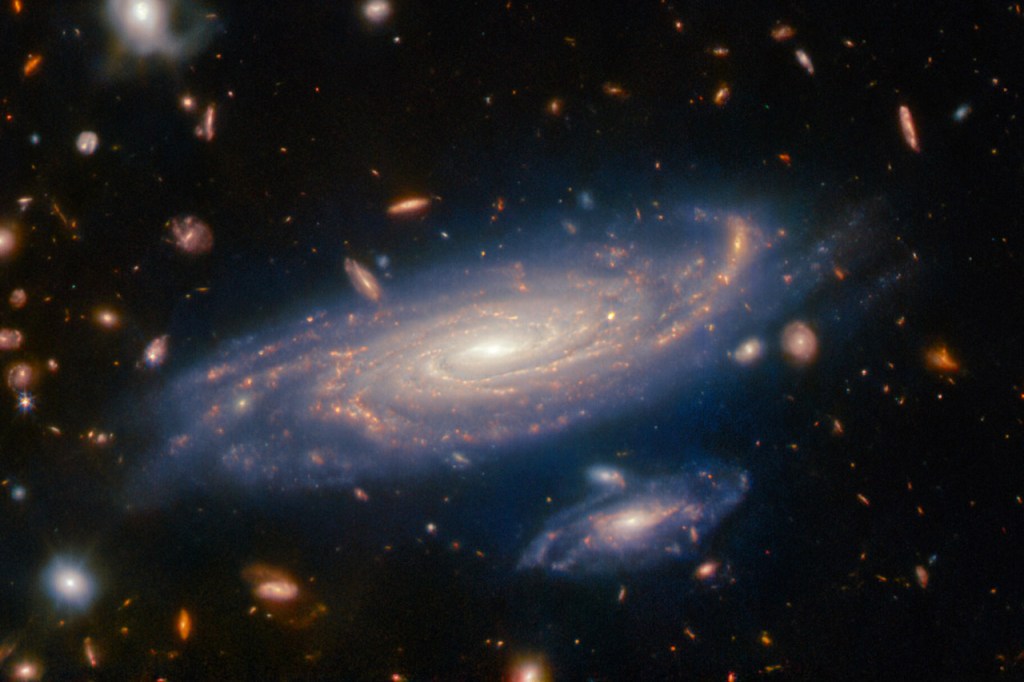Using the James Webb Space Telescope (JWST), astronomers believe to have found a galaxy that was a near identical image to the Milky Way 13 billion years ago. What it can tell us about our own galaxy could be groundbreaking.
The JWST is the largest and most powerful optical telescope ever built. It’s equipped with high-sensitivity instruments that allow it to view extremely old and distant objects in infrared. Ones that are to faint for the Hubble Space Telescope.
Late last year, the Webb telescope discovered a spiral galaxy known as LEDA 2046648, nicknamed “Sparkler,” after the dwarf galaxies and 12 groups of globular clusters, that glimmer around it. Globular clusters are dense groups of millions of stars bound to each other by their own gravity. The Milky Way is said to be home to about 200 globular clusters.

The most defining characteristic of the newly discovered galaxy is how it appears to look like a “very early” mirror image of the Milky Way, according to a report published in the journal Monthly Notices of the Royal Astronomical Society.
The Sparkler galaxy is in a cannibal stage of its life, consuming smaller galaxies and celestial objects nearby. Much like the Milky Way galaxy did in its infancy.
Research co-authors, Professor Duncan Forbes of Swinburne University in Australia and Professor Aaron Romanowsky of San Jose State University in the United States, investigated the age and metallicity of a dozen of the compact star clusters around Sparkler. They determined that several have old formation ages and are metal-rich, similar to ones seen in the bulge of the Milky Way.
The mass of our galaxy is mainly made of our stars. Roughly 1.5 trillion of them to be exact. Sparkler is only about 3% of the mass of the Milky Way, but is expected to grow to the current mass of our galaxy over cosmic time. Continued study and observations of Sparkler could help astronomers understand how our home galaxy took shape.
“We appear to be witnessing, first hand, the assembly of this galaxy as it builds up its mass—in the form of a dwarf galaxy and several globular clusters,” Forbes said in a statement. “We are excited by this unique opportunity to study both the formation of globular clusters, and an infant Milky Way, at a time when the universe was only one-third of its present age.”
Romanowsky comments, “The origin of globular clusters is a long-standing mystery, and we are thrilled that JWST can look back in time to see them in their youth.”
Related stories:
- James Webb reveals protostar cocooned within dark hourglass-shaped clouds
- NASA discovers Mars formation resembling the face of a bear
- How many exoplanets have been discovered?
FTC: We use income earning auto affiliate links. More.



Comments